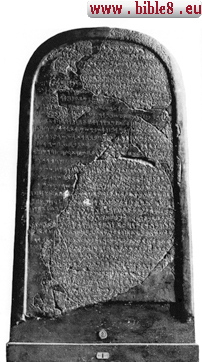
Biblical Covenant Theology:
Rituals, Signs, and Renewals Explained
The noun "Covenant" (Hebrew: brit) appears 287 times in the Old Testament, always in the singular. In the New Testament – (diatheke) – 33 times; 2/3 of these are quotations from the Old Testament; the rest are mostly in Paul.
The Concept of "Covenant"
The Covenant (Hebrew: brit, Greek: diatheke, Latin: testamentum) describes a mutual commitment, where either self-obligation, the obligation of another, or mutual commitment may take precedence. A covenant can establish a relationship between individuals, groups, or between human beings and God.
Mutually binding community in the Old Testament is portrayed as self-commitment through God's promises on the one hand, and Israel's obligation through commandments on the other. The covenant creates a sphere of communal salvation (shalom) and covenant loyalty (chesed and zedaka) between God and His people. Whoever violates these commandments exits the sphere of covenantal blessing.
Translation Problems
"Karat berit" (Hebrew) = meaning "to establish an obligation." The German term "Bund" does not precisely match the Hebrew brit.
1. Brit does not denote a "relationship" but rather the "stipulation" or "obligation" assumed by the subject;
in such a context, brit can even mean a "pledge."
The content of such a brit as "self-commitment" must be derived from the context:
e.g., "to let (others) live" – Josh 9:15a.
Thus, a brit assumed as a self-obligation does not necessarily require a counterpart.
A self-obligation can be further confirmed by a curse ritual, where one passes between the parts of a sacrificed animal (Jer 34:15-19; Gen 15:17f.): If the pledge is not kept, the violator shall suffer the same fate as the animal.
2. The subject making the covenant can impose an obligation on the counterpart (2 Sam 3:12f.).
3. Mutual obligation (1 Kgs 5:26).
4. Establishment of a covenant by a third party (2 Kgs 11:17).
5. Different verbs are used for making (a), keeping (b), and breaking or annulling (c) a brit.
- The oldest and most common phrase is *krt brit*, literally "to cut a covenant," meaning "to make a stipulation or establish an obligation."
- To remember / to preserve (Amos 1:9).
- To desecrate / to violate (Ps 55:21) – from the human side.
To forget (Deut 4:31) – from God's side.
In today's language: "Contract"? And only in written form?
The Old Testament describes several covenant-making events. In prophetic tradition, the idea of covenant was eschatologized: Jer 31:31–34 – the law will be written on the hearts of Israel.
Attempts to clarify the etymology of brit are diverse:
- Akkadian: "bond" or "fetter"
- Akkadian preposition "between"
- Verb *bhr* (only in Arabic) – *cecidit* meaning "I have struck/slaughtered"

In the Ancient Near East, covenants were usually sealed on a stone or with a stone monument
A kind of "standard form" can be recognized, and the contract form identified as a fixed literary genre.
The texts demonstrate a high educational level among their scribes: they were jurists interested in precise wording, diplomats who understood fine nuances, and historians familiar with archives.
The contracts have been preserved in clay tablet copies. Materials for original documents included iron, silver, and gold. The original and a possible duplicate were laid before or at the feet of the main deities of the contracting parties.
Vassals were often instructed to regularly hear the reading of the contract text to ensure familiarity with its contents.
The covenant format in the Old Testament parallels the structure of Ancient Near Eastern state treaties. The covenant is made "forever." Renewal is required only if the covenant is broken. A confirmation takes place when Israel changes leadership. This later led to the transformation into the concept of "testament."

Hittite texts highlight the significance of writing: "My grandfather showed him mercy. A contract tablet was written..." A document is an inseparable part of the contract.
Today, covenants/contracts are no longer written on stone
Against the 6 Theses of J. McCarthy:
- It is unclear how this contractual form from Asia Minor could have come to early Israel.
- Applying a political-human contract form to the relationship between God and Israel?
- Nowhere in the Old Testament is the detailed Hittite treaty form fully present.
His conclusion: One should not draw too close a parallel between the Old Testament theological *berit* and Hittite treaty texts.
Covenant Ceremony
| Gen 15; Jer 34 – Cutting animals and passing between the parts as a symbolic curse ritual. | Mesopotamian sources: "Touching the throat" as punishment for violators. |
| Gen 15, 1 Sam 1:24 – Sacrificed three-year-old animals: calf, goat, and ram. | Greek covenant sacrifices: 3 animals (ram, goat, boar), usually 3 years old. |
| Ex 24 – Blood ceremony: half of the blood on the altar, half on the people. | Herodotus mentions similar blood ceremonies among Arabian tribes. |
Festive Meal
| Gen 26:30; 31:54; Ex 24:11; 2 Sam 3:20 – Salt as a significant element (Lev 2:13; Num 18:19; 2 Chr 13:5). | Neo-Babylonian letter: "all the people who have tasted the salt of the tribe of Jakin"; Latin: *foedus salitum*. |
Other Ceremonies for Obligations
| Placing the hand under the thigh (Gen 24:2,9; 47:29) or handshake (Ezek 17:18). | Touching the chest in Assyrian sources. |
| Exchange of garments between parties (1 Sam 18:3f.). |
External Signs of the Covenant
| Erection of a monument as a "witness" or "testimony" (Gen 31:45f.; Josh 24:26f.). | Setting up stelae during covenant-making in Greece. |
| Physical injury as a covenant sign: circumcision (Gen 17:11) or 1 Sam 11:2. | |
| Sabbath (Ex 31:16f.) and rainbow (Gen 9:17) as covenant signs. |
Covenant Renewal
|
Ex 34; 2 Kings 11:17; 23:1-3 – Covenant renewal as a result of broken relationships. |
Ancient Near Eastern and Greek documents: covenants were usually renewed either after a breach of relationship or as a regular annual arrangement. |
Recording
|
For the stone tablet, biblical Hebrew uses "Lwh" (see p.793 *brit*), while "sfr" refers to any type of written document. The breaking of the tablets by Moses (Ex 32). |
The covenant must be recorded either on stone (sometimes on metal plates), on clay (especially in Mesopotamia), or on a scroll (leather or papyrus). Breaking the covenant tablets invalidates the covenant. |
Köhler in "Th. of the OT": "The entire covenant was encapsulated in the word: 'I will take you as my own people, and I will be your God' (Ex 6:7). The covenant thus exists without any historical or territorial perspective."
Maritext: The overlord mediates peace between warring tribes. In the covenant mediation, the sacrifice of a donkey plays a role.
Hittite treaty forms.
Thematic Overviews
- Covenant and Land
- Covenant and Foreign Gods
- Covenant and Law (Covenant Document)
- Theophany and Covenant
- Promise and Obligation (Ex 34)
Interpretations of Covenant Theology
- People’s Covenant Obligations (Neh 9 / Ezra 9–10 / 2 Chr 15 / Josh 24)
- Covenant Blood at Sinai (Ex 23:25-32; 24:1-11)
- Priests/Levites: Covenant "Agents" (Mal 2:4f.8; Num 25:12-13; Jer 33:21)
- Davidic Covenant (2 Sam 23:1-7; 2 Sam 7 / Ps 132 / Ps 89)
- Everlasting Covenant – "Mercies of David" (Isa 55:3-5; 42:6; 49:8; 61:7-9)
- Josiah’s Covenant Book (2 Kings 22–23)
- Renewed Covenant (Jer 31:31ff)
- Eschatologically-Oriented Covenant Renewal (Deut 29–30; 4:29-31; Lev 26:39-45)
- Covenant of Peace. Renewal of Heart/Spirit (Ezek 34:24-25; 16:59-63; 36:22-32)
- Primeval History and Patriarchs: Noahic Covenant (Gen 9:13). Patriarchal Covenant (Gen 15)
- Circumcision Covenant (Gen 17:10)
- Horeb Covenant (Decalogue)
- Sabbath Covenant (Ex 31:13)
1) When transferred to the theological realm, "brit" refers to the relationship between God and humanity. The subject of the "brit" is usually God, signifying either God's self-obligation or the obligation imposed by God on humanity.
2) God's self-obligation toward various recipients:
- Patriarchs (or their descendants/Israel) (Gen 15:18)
- David: The "brit" established by God with David contains the promise that David's throne will endure forever and always be occupied by a descendant of David (2 Sam 23:5), alongside the oath (Ps 89:4) and the word (2 Sam 7:11b).
- Noah
- Priesthood concerning Levi
- Beyond the exile: After the conquest of Jerusalem and the fall of the state of Judah in 587 BC, the question arose whether God had annulled his "brit," his promise to the ancestors, due to the people’s disobedience. One view holds that God maintains his "brit" even in exile (Lev 26:44 with the Israelites; Jer 33:21 Davidic and Levitical covenant) and remembers his "brit" (Lev 26:42). On the other hand, prophecy announces that God will establish a new "brit" with his people.
Covenants are made between:
- God – Human
- State – Its Representative (1 Kings 5:26)
- King – His Subjects (2 Sam 5:3)
- Military Leader – His Soldiers (2 Kings 11:4)
- Man – Woman (Ezek 16:8)
- Human – Animal (metaphorically, Job 5:23)
- And even a Covenant with Death (Isa 28:15,18)
In certain cases, the covenant is mediated by a third party. Especially in covenants with God, a man of God (priest, prophet, etc.) mediates — thus Moses (Ex 24) and Joshua (Josh 24) mediate the covenant between God and Israel.
The covenant usually has "eternal validity": in divine covenants (Gen 9:12) but also in secular treaties (1 Sam 20:15).
Sabbath, rainbow, and circumcision represent the three great covenants that God established at critical stages of history: at Creation (Gen 2:3; Ex 31:16f.), at the restoration of humanity after the Flood (Gen 9:1-17), and at the formation of the Hebrew people (Gen 17).
Donation
© 2012 - 2025
